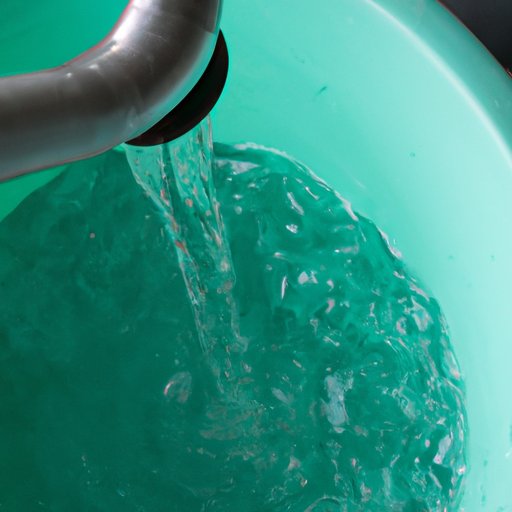
Introduction
Have you ever been caught in a downpour while you were thirsty and wondered if you could drink the rainwater? It’s a common question that has sparked a debate amongst people. While rainwater can be safe to drink occasionally, it is not recommended as a regular source of water. In this article, we’ll explore the science behind rainwater, its quality, how to harvest it, health benefits, contaminants, and when it’s safe to consume in emergency situations.
Science behind Rainwater
Rainwater is formed through the process of evaporation and condensation. Sunlight causes water bodies like lakes, rivers, and oceans to evaporate, forming water vapor in the atmosphere. The water vapor cools and condenses into clouds. When the clouds become too heavy, they release water droplets in the form of precipitation, such as rain, snow, sleet, or hail.
Water that falls from the sky is naturally filtered before it reaches the ground. As it falls, it passes through the air, which contains natural filters, like ozone, that remove some of the pollutants. However, pollutants from the air and from the surface can still contaminate it.
Rainwater is typically not treated with disinfectants, like chlorine, and is, therefore, not safe for consumption regularly. Drinking untreated rainwater can lead to harmful diseases, so it’s important to understand the risks.
Water Quality
Several factors can affect the quality of rainwater, including location and environment. Areas with heavier air pollution, for instance, can have lower quality rainwater. Acid rain is a phenomenon that occurs when precipitation is acidic due to pollutants, like sulfur dioxide, that mixes with water in the atmosphere. Human activities can contribute to acid rain by releasing pollutants that reaction with water in the atmosphere.
The collection technique can also impact the quality of collected rainwater. Harvesting rainwater from rooftop gutters can collect debris, like leaves, twigs, and bird droppings, that can contaminate the water. An improper installation of the collection system or storage tank can also result in contamination and the growth of microorganisms.
Harvesting Rainwater
Collection of rainwater for drinking purposes requires specific techniques to ensure that the water is safe and drinkable. The collection system should be clean and free of debris, and the surface water from which the rainwater is being collected should be free from pollutants and contaminants. The water can be filtered to remove any remaining contaminants like dust, debris, or microbes. Boiling rainwater is also an effective way to get rid of potential waterborne diseases.
However, it’s important to note that collection of rainwater for drinking purposes may cause ethical and legal issues in some regions. Check with local laws and regulations in your area before installing a rainwater harvesting system.
Health Benefits of Rainwater
Drinking safe and clean rainwater in moderation can have some potential health benefits. Rainwater is soft water, which means it is free from hard minerals like calcium and magnesium. It’s easier to digest and can promote better hydration. It is also free from additives such as fluoride that are often present in tap water.
Additionally, drinking moderate amounts of rainwater can support the body’s natural detoxification process, flushing out harmful toxins and impurities. This can lead to better digestion and improved overall health.
Contaminants in Rainwater
There are some risks associated with drinking rainwater. The water can become contaminated by pollutants from the air, surface, or collection systems. Pollution from various sources such as vehicular traffic, industry, and agriculture can affect the quality of rainwater.
Animal waste and carcasses can turn rainwater into a breeding ground for harmful bacteria, viruses, and parasites such as E.coli and Cryptosporidium. Birds and other animals can also use rooftop tanks as a drinking source, leaving behind fecal matter and other impurities.
Drinking Rainwater in Emergency Situations
Drinking rainwater may become necessary during emergency situations like natural disasters, droughts, and power outages. In such cases, it’s essential to ensure that the water is clean and safe. Filtering and boiling rainwater can remove contaminants and make it safe for consumption. In such cases, getting to clean and safe sources of water is a priority.
It is important to remember that safe and clean drinking water is essential to survival and should be prioritized during emergency situations.
Conclusion
Drinking rainwater can be safe in moderation, but it is not recommended as a regular source of drinking water. The quality of rainwater can vary depending on the location and environment, and it must be harvested correctly to avoid contamination. When collected and consumed safely, rainwater can provide some potential health benefits and can be a reliable source of water during an emergency. Understanding the science, quality, and risks of rainwater consumption can help individuals make informed decisions about when and how to drink it safely.




